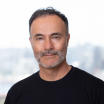Toyota Motor Corporation Australia (TMCA) and Hyundai Motor Company Australia (HMCA) in partnership with fuel companies Ampol and Pacific Energy have announced an historic memorandum of understanding (MOU) to develop local refuelling infrastructure.
In other words, to dramatically increase the number of hydrogen filling stations, including for fuel-cell electric vehicles (FCEVs), from fewer than 10 currently in operation across Australia. These are in Melbourne, Canberra, Sydney, Brisbane and Perth.
TMCA was first of the vehicle manufacturers with around 50 Mirai FCEVs imported since 2018, followed by HMCA in 2021; it currently operates 23 Nexo FCEVs, which are under special leasing deals with carefully chosen organisations. Neither are available for public sale as yet.
“Toyota has joined forces with three other industry heavyweights to accelerate the reality of a hydrogen society built upon clean and renewable energy technology,” TMCA said in a statement.
“We have signed a memorandum of understanding with Hyundai Australia, Ampol and leading hydrogen technologies specialist Pacific Energy to help develop hydrogen refuelling infrastructure.
“This partnership agreement brings together four like-minded companies that are all leading proponents of Australia’s growing hydrogen economy.
“Both Toyota and Hyundai have fuel-cell electric vehicles in customer programs while Ampol and Pacific Energy are heavily invested in growing sustainable energy development and distribution.
.jpg)
“This MOU is a vital development because hydrogen ecosystems must involve sectors uniting so they can bring together their skills, technologies and applications.
“It’s an agreement that demonstrates a commitment to work together on further opportunities to explore and grow this vital technology… which will play a role in the transition to more renewable energy sources.”
No other information regarding government assistance, timelines, locations, rollouts, levels of financial commitment and/or resource involvement, other associated costs or what the infrastructure would look like has been divulged.
Meanwhile, HMCA CEO, Ted Lee, reiterated that his company helped set up this country’s first hydrogen filling station.
.jpg)
"In 2021, Hyundai deployed 23 NEXO Fuel Cell Electric Vehicles into Canberra as a partner in the ACT Government’s hydrogen station project – the first hydrogen refueller of its kind in Australia,” he said.
“Our consortium partners have a great track record of deploying energy and refuelling infrastructure, along with hydrogen fuel cell vehicles. Hyundai looks forward to working with our experienced partner companies and the broader government and business.”
According to TMCA Vice President Sales, Marketing and Franchise Operations, Sean Hanley, the MOU has come about because the discussion surrounding what hydrogen infrastructure looks like has to begin somewhere.
“I guess you know, there's a realisation that if we're going to progress with hydrogen infrastructure, we need to come together,” he told Australian journalists in Tokyo last week. “And that's exactly what this is the start of.
.jpg)
“It's just an understanding that we'll work together and then we'll determine these types of investments in direction as we go forward.
“All of these details will need to be worked through as we go forward. It's just a handshake deal and there's no money changing… an understanding and by the team [in] good faith.”
Hanley added that Toyota is already invested in hydrogen vehicles for Australia.
“This is a stepping stone to a hydrogen society,” he said.
.jpg)
“Because, from a Toyota perspective, we've never shied away from the fact that we believe that hydrogen fuel-cell technology will play a role, and it has a role to play particularly in heavy-commercial vehicles. And when you look at what we use vehicles for Australia, which will be more than meets the eye.
“I believe in it, that hydrogen is an outstandingly good fuel source and solution to a carbon-neutral commercial vehicle that has to tow and has to have range and doesn't take a long time to recharge or fill. Hydrogen works in that regard.
“So, once we can establish an infrastructure, I think it's got an incredibly good future.”
However, Hanley also admitted that ‘green’ hydrogen – which does not involve the use of fossil fuels to manufacture it – is still some time away from a reality in Australia, so even its FCEVs will not be completely 100 per cent emissions-free.
.jpg)
“Yes, in the longer term (we will have green hydrogen),” he said. “Absolutely. Because we want an end-to-end solution, but (cannot) initially.
“Initially, it's going to be difficult (to achieve) because you've got to have a lot of renewable energy sources of which Australia truly doesn't have right now.”
Last week, Toyota also announced a project to build hydrogen fuel-cell generators in Melbourne for applications beyond automotive, for both Australia and in New Zealand. This is said to be the same fuel-cell tech as found in the Mirai.
Next year BMW will import three special experimental iX5 Hydrogen SUVs into Australia for climate, environmental and public response testing.




-2.jpg)


.jpg)

.jpg)
.jpg)

.jpg)

.jpg)

.jpg)
.jpg)

.jpg)

_0.jpg)
.jpg)
_0.jpg)
.jpg)
.jpg)
.jpg)


.jpg)

.jpg)
Comments